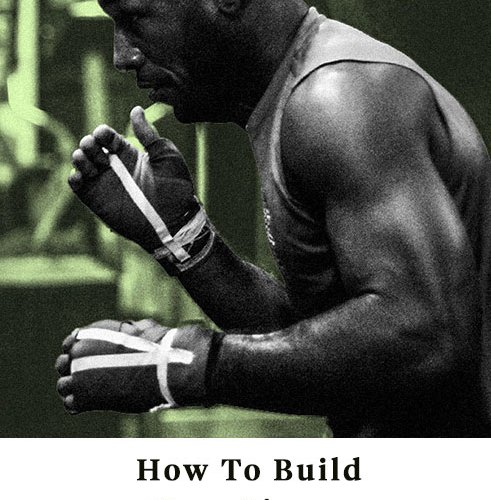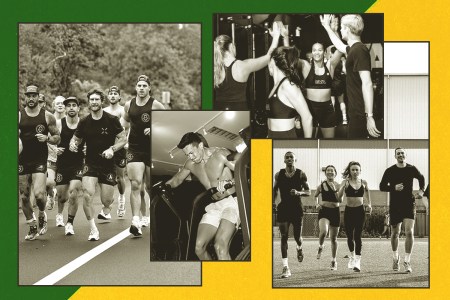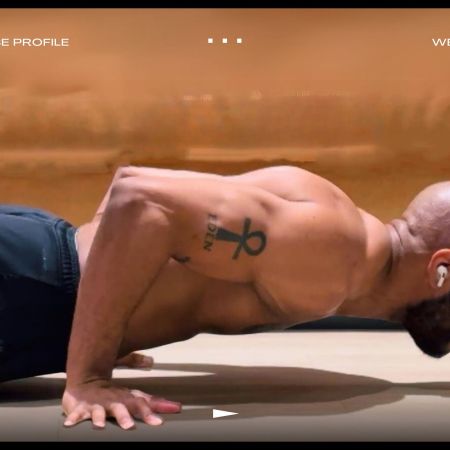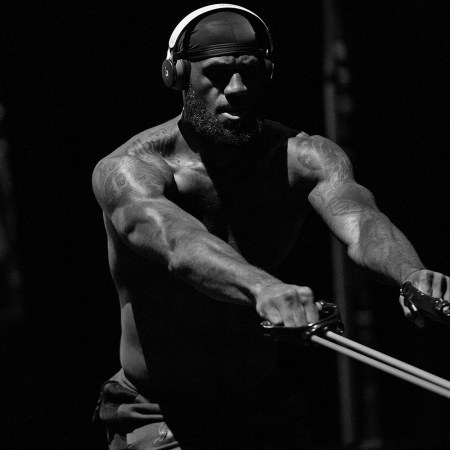Cue up any prison-yard tracking shot ever, and there’s at least one millisecond afforded to some jabroni curling a loaded dumbbell, his elbow propped against the interior of a leg. For decades, inmates, lifeguards and bodybuilders alike have hammered away at so-called prison curls, which were presumed the best way to isolate and build up the bicep.
But as strength training’s core theory has shifted in recent decades to prioritize functional movements, the bicep curl has steadily been cycled out of trainers’ notebooks. Similar to calf raises or machine leg extensions — two other exercises that isolate a single muscle for endless, one-dimensional repetitions — bicep curls remain a moneymaker for the beach or box office, but aren’t considered a difference maker in helping you serve a tennis ball faster or push your friend’s car out of a snowbank.
That adjustment in thinking doesn’t mean you should stop working your biceps. Far from it. If the draw of bigger arms gets you to the gym and ultimately gives you more confidence when putting on a T-shirt, then go for it. (Certain trainers have even reported plugging bicep curls into their athletes’ training regimens as “a way to keep them happy.”)
It does mean, however, that you should train your biceps smarter, and safer. Consider: heavy weights can put unnecessary strain on joints, especially when your form is sub-par or if you’re isolating muscles (a practice that takes forever and increases your risk of injury). Remember, the biceps brachii is a smaller, two-headed muscle; you’ll be better served by compound exercises that target multiple arm muscles at once.
If you learn to train your whole arm through alternative means, you’ll get the benefits of function, injury-prevention and aesthetics wrapped into one Popeye-sized wing. Below, we delve into some of the techniques, tips and junk around the house that will keep your guns firing year-round.
How Aussie “Squad Training” Became the Hottest Thing in Fitness
The Athletic Clubs trades in affability, accountability and overly-active WhatsApp groupsSuitable Stand-Ins
A sturdy pull-up bar is one of the most useful (and simple) pieces of fitness equipment you could possibly hope for; 21 different muscles are engaged when you hoist your weight above a bar — everything from pecs to deltoids to a pair buried in your shoulder blades called rhomboids.
Though trainers normally encourage pull-ups over chin-ups, chin-ups ask as much from biceps as the latissimus dorsi without sacrificing action elsewhere. Plus, unlike pull-ups, which require you to drop all the way down, chin-ups are best performed when you stop just short of full extension and maintain the tension in your biceps. If you have an open jungle gym in your town, you have a pull-up bar.
Resistance bands are another non-dumbbell hero for torching the upper body. You can utilize them for all manner of rows (loop them around a pole or tree, or lodge them in the hinge of a door) and also stand on them, contracting upwards, for a more dynamic version of the bicep curl. And when you use a resistance band, the weight isn’t fixed — you can achieve “variable tension” by just squeezing your muscle a bit harder. Try the following resistance band exercises to get started: Banded Face Pulls, Banded Hammer Curls, Banded Pull-Aparts and Banded Reverse Curls.
Meanwhile, if you’re game to just totally fry your biceps, the Banded 21s exercise. It deconstructs banded curls into three distinct phases, asking for seven reps at each “station” of the move.
Fancy Push-Ups
In lieu of sourcing bands, you can always just use your bodyweight. Start by getting into planks, which work everything, even the biceps. Then mix in dynamic planks, also known as push-ups, which come in as many iterations as Ben and Jerry’s has flavors. There are traditional push-ups, wide-grip push-ups, superman push-ups, incline push-ups, push-ups against yoga blocks, etc.
For building a better bicep, specifically, focus on just a few fancy push-ups:
- Decline Press-Ups: Keep your feet on an elevated surface behind you, like a bench, chair or bottom step, and perform push-ups against the ground.
- Diamond Push-Ups: Make a triangle with your hands and work the triceps, which encourages overall growth and stabilization in the upper body.
- Bicep Push-Ups: Invert your wrists and try to point your fingers back towards your feet while they’re planted on the ground. It’s going to feel like your wrists might snap, so take these easy (this is why we work on stabilization with the other push-ups) and try to do five at a time. Once they feel more comfortable, go for 10 or 12.
Isometric Holds
According to research published in the British Journal of Sports Medicine isometric exercises have remarkable potential for reducing blood pressure, particularly for individuals with hypertension.
When we think of isometric fare, we generally conjure crowd favorites like wall sits, planks and overhead holds, but there are bicep-specific moves to try, too. That way you can wed your short-term fitness goals with your long-term wellness ones. Try out chin-up holds (self-explanatory), the Towel Isometric Curl and the Plank-to-Bear Crawl Hold. When in doubt, you can also just stand with a pair of dumbbells in your hands, elbows locked and arms at a 90-degree angle, for a good minute.
Got Milk?
Believe it or not, the crap all around your house makes for some passable workout equipment, and you can use it to grow your biceps. Once you save two gallons of milk, fill each with water and use them for hammer curl repeats, a motion that requires a neutral grip in each hand, and a simultaneous elbow flex. (Hammer curls earn rave reviews from trainers for efficiently working both the brachialis and brachioradialis.) Laundry detergent dispensers also work well, because they have a nice grip.
You can also use the jugs for tricep skull-crushers (activating those triceps, as always when we engage larger muscles, help catalyzes growth in the muscular neighborhood) or fill up a pair of water-bottles with dirt for kickbacks. Elsewhere around the house: imitate BOSU-ball stability work on cushions, perform dips on chairs, or get the shoulders involved by lifting bags of rice, flour or even dog food over your head. If you’d rather leave your pantry out of it, consider packing a backpack with books, zipping it up, and filtering a dish towel through the top grip loop. This makes for a dynamic standing bicep curl.
Aerobic Pursuits
You can (and should!) break apart your strength training days with exercise that gets the blood pumping. Too often, lifters dead-set on building their ideal summer torso refuse to run or jump for months on end, terrified that they won’t be able to put on the weight. That’s nonsense. Any exercise that challenges your VO2 max is also going to burn fat, which is going to accentuate showy muscles like the biceps. On top of running or cycling, incorporate routines like shadow-boxing and jump-rope endurance training, which are fun, different for the body and activate the biceps. Try jumping rope for even just a minute; I guarantee your arms will be as tired as your pups.
Help Yourself Out
To make sure all this work isn’t for naught, a few basic rules:
- Don’t overwork your biceps. It’s a small, easily irritated muscle. You shouldn’t be working it more than twice a week (or lifting upper-body, for that matter, more than three times a week). Give your body a chance to heal and grow.
- During that recovery process, feed the beast. Take a supplementary protein to make sure you’re getting at least 1.5 grams of protein for every kilo of body weight. For me (I’m 180 pounds) that means around 123 grams of protein. Serious gains will warrant closer to 2.0 grams of protein per kilo, though. On top of meats and fish, try to get lots of nuts (almonds are a no-brainer for fast protein) and veggies like edamame, beans, chickpeas and lentils.
- Keep a clear head. I get it; on some level, even if you’re open to the process and eager to learn all the compound movements, there’s a reason you’re trying to build bigger biceps. Very few among us would object to looking like an Old Spice advert. Just, remember that gains take time, and all the work you do along the way is worth it. Try to keep the weight low and the reps high, and focus on little adjustments along the way, like holding the position for maximum tension and maximizing full rotation.
Whether you’re looking to get into shape, or just get out of a funk, The Charge has got you covered. Sign up for our new wellness newsletter today.


























